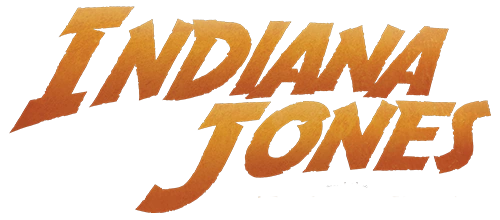m (Reverted edits by 67.58.169.194 (talk) to last version by Vetinari) |
|||
| Line 25: | Line 25: | ||
To escape the room's traps, the archeologist rides the throne with the body of the emperor up and out of [[Mount Hua]] during which Qin's head detaches and disappears down the mountainside.<br /> |
To escape the room's traps, the archeologist rides the throne with the body of the emperor up and out of [[Mount Hua]] during which Qin's head detaches and disappears down the mountainside.<br /> |
||
Then, one year later in [[1935]]<ref name="Emperor's Tomb">''[[Indiana Jones and the Emperor's Tomb]]''</ref>, Indy once again finds the body of the emperor inside the [[Netherworld]] via his tomb and precedes to pluck the [[Heart of the Dragon]] from his mouth which reanimates the corpse. |
Then, one year later in [[1935]]<ref name="Emperor's Tomb">''[[Indiana Jones and the Emperor's Tomb]]''</ref>, Indy once again finds the body of the emperor inside the [[Netherworld]] via his tomb and precedes to pluck the [[Heart of the Dragon]] from his mouth which reanimates the corpse. |
||
| + | |||
| + | |||
| + | |||
| + | It's possible that the tomb Indy found in 1934 was a decoy intended to foll robbers and the one he found in 1935 was the real deal. |
||
==Appearances== |
==Appearances== |
||
Revision as of 17:43, 23 July 2009
- "What an ego."
- ―Indiana Jones[src]
Qin Shi Huang (or Ch'in Shih-huang-ti) was the first Emperor of the Qin Dynasty and unified China. His reign lasted from 221 BC to 210 BC, during which he conceived the idea of joining the fortifications and watchtowers marking the edge of his empire with one long continuous wall that would become the Great Wall of China[1].
Upon declaring himself First Emperor of China[2], the wise yet ruthless former warlord surrounded himself with astrologers and alchemists in search of means by which he could be granted eternal life.[2]
Then four years into his reign, a meteorite struck the ground in Shaanxi Province mysteriously foretelling Qin's death on its inscription. The emperor began construction on his own tomb the following year[2] deep within the Sacred Mountain, Mount Hua. Folktales would say the completion of the complex took nearly four decades and 700,000 laborers. [3]
After his death, Qin was buried along with thousands of his own soldiers and servants, who would form the spirit army backbone of the Terracotta Army[4]. Among the treasures that had been stored alongside him, Qin's body would sit for centuries until the 1930s when his body was discovered by Indiana Jones.[3][4]
Behind the scenes
There is some inconsistancy in Indiana Jones continuity in that Indy has met the First Emperor of China twice within the space of two years.
In 1934[3], Jones finds Qin's corpse sitting on a mechanical jade throne inside his tomb.
To escape the room's traps, the archeologist rides the throne with the body of the emperor up and out of Mount Hua during which Qin's head detaches and disappears down the mountainside.
Then, one year later in 1935[4], Indy once again finds the body of the emperor inside the Netherworld via his tomb and precedes to pluck the Heart of the Dragon from his mouth which reanimates the corpse.
It's possible that the tomb Indy found in 1934 was a decoy intended to foll robbers and the one he found in 1935 was the real deal.
Appearances
- The Young Indiana Jones Chronicles – "Peking, March 1910" → Journey of Radiance (First mentioned)
- Indiana Jones and the Secret of the Sphinx (Corpse)
- Indiana Jones and the Emperor's Tomb
Notes and references
- ↑ "Peking, March 1910"
- ↑ 2.0 2.1 2.2 http://web.archive.org/web/20061129145703/http://www.theindyexperience.com/video_games/emperors_tomb_history.php From LucasArts' website Cite error: Invalid
<ref>tag; name "Lucasarts website" defined multiple times with different content Cite error: Invalid<ref>tag; name "Lucasarts website" defined multiple times with different content - ↑ 3.0 3.1 3.2 Indiana Jones and the Secret of the Sphinx
- ↑ 4.0 4.1 4.2 Indiana Jones and the Emperor's Tomb

